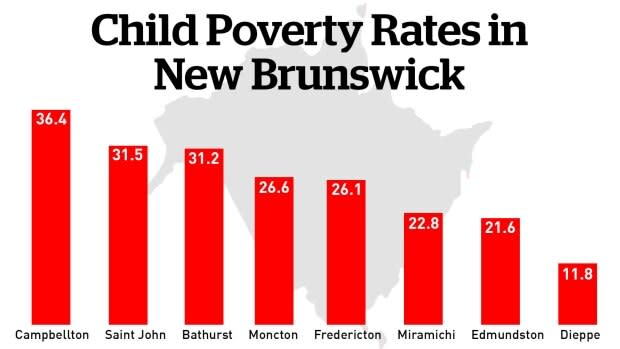Experts urge caution when interpreting poverty rates
New figures from Statistics Canada show the number of New Brunswick residents living in poverty is decreasing, but some local experts are taking those numbers with a grain of salt.
The Statistics Canada figures also show that the number of children living in poverty has decreased by half — from 20,000 in 2015 to 10,000 in 2018.
Karen Foster, an associate professor in the Sociology department at Dalhousie University, said people should be cautious about interpreting the Statistics Canada numbers as a sure sign that poverty is decreasing.
"If you talk to, you know, to the average New Brunswicker, they might feel like they're not significantly further ahead," Foster said, who's also Canada's Research Chair in Sustainable Rural Futures for Atlantic Canada.

Statistics Canada uses the market basket measure system to determine who falls below the poverty line. The market basket measure system takes into account the cost of groceries, rent and clothing to determine low income.
The Statistics Canada survey also determines the average cost of living in each province and territory and how far away someone is from the median income.
"Ordinary people look at this data and say, 'Well, you know, how is it that I feel increasingly squeezed?'" Foster said.
"I think some of the answer might lie in how we measure cost of living and how we take into account the fact that what counts as a decent living … is socially determined."
Randy Hatfield, the executive director with the Saint John Human Development Council. said the definition of what constitutes a decent living changes over time.
"The most recent calculation was based in 2008 and we know that back then there was little consideration for technology, to something like cell phones or Internet access," said Hatfield.
Even the concept of a poverty line can lead to some people being viewed as getting by financially when they're really not.
"If you're above the line you're not in poverty, if you're below the line you are," said Hatfield.
"That's pretty crude. What if you're $10 just below or $10 just above?"

